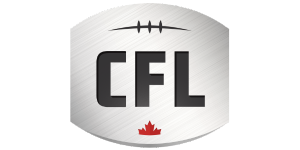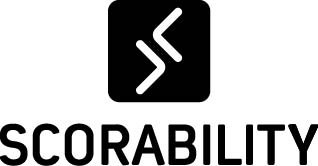
Unpacking from The Queen City
January 24, 2023
Like thousands of you, we were fortunate enough to spend a few days in Charlotte at the 2023 AFCA Convention. We hope your trip was filled with plenty of learning, catching up with old friends, and making new connections in the industry.
From the countless conversations we had with coaches of all types from high school to the new class of “35 Under 35” honorees to FBS assistants and head coaches, there were a number of themes that came up more often than others. On the football side of life, the time management “juggling act” that college coaches deal with has seemingly never been more difficult. AFCA members- specifically in the college football world- now have to master the realities and challenges of the Transfer Portal and Name, Image, and Likeness for your current players and recruits while simultaneously preparing your current team for postseason games and wrapping up your class of recruits in time for the new Early Signing Day all in the middle of the holiday season. Good thing your spouses and significant others can double as Santa Claus and his elves, right?
But, on the personal and financial side of life, we seemed to hear about the following topics in our conversations with clients and other AFCA members most often:
Am I Doing All That I Can?
In our conversations in Charlotte and afterwards, we found that a good amount of coaches at modest and high levels of income seem to be “maxing out” their respective employer-sponsored retirement plans. For most, this refers to the $22,500 salary deferral allowed by the IRS into a 403(b) or 401(k) plan in 2023. Savers who are over 50 years old can defer an additional $7,500 (1). Any match or contribution made by the employer is not included in that salary deferral amount. In a recent survey of higher education retirement plan sponsors, almost 70% of organizations responded that their plan offers a match of 4% of salary or greater (2). That, of course, is free money.
However, it seems that many of the coaches in the high school and college space we talked to do not contribute to a second retirement plan offered by almost 50% of organizations who responded to the same retirement plan survey. This second retirement plan is a 457 Plan.
457 Plans allow for the same salary deferral amounts as a 403(b) or 401(k) Plan- $22,500 if under 50 years old or $30,000 if over 50 years old. Typically, 457 Plans also offer the same investment options and record-keeper choices as the 403(b) or 401(k) Plan. The employers make these plans simple to contribute to.
But there are two important differences:
- Employer matches or contributions are not allowed into a 457 Plan.
- Withdrawals from 457 Plans sponsored by state governments (and, therefore, state universities) do not trigger a 10% early withdrawal tax penalty if taken prior to age 59 ½ years old (3).
What Should I Do About the Housing?
It is no secret that the housing market has gone bonkers since the start of the COVID-19 pandemic three years ago. For perspective, according to the National Association of Realtor’s latest Housing Affordability Index (4), the median priced single family home price was $274,600 in 2019. That price for the same type of home reached a peak of $420,900 in June 2022 before decreasing to a price of $376,700 more recently. That is still an increase of 37% in approximately 3 years.
So, the purchase price of a home has obviously skyrocketed in a blink of an eye. Making the purchase of a home even more difficult is the fact that interest rates on home loans has also increased to the highest rates in recent memory. From the Housing Affordability Index data, mortgage rates for a 30-year fixed loan were at their lowest in 2021 at 3.01%. The most recent reading of the interest rate on that same type of loan was over 6.0%. Subsequently, the monthly mortgage payment on the median priced existing single family home rose from $1,206 to $1,967 in that period.
In short, for those coaches who are on the move to another job in a different city or those coaches perhaps looking at a different house in the same city, now may be a good time to run numbers and consider renting a home until the housing prices cool off or home loan costs go down to more normal levels.
Money in the Bank
Another interesting topic that seemed to come up often during our time in Charlotte was the concept of an emergency fund or savings account at the bank. We suggest keeping six months or so of living expenses in the bank for coaches with multi-year contracts and perhaps twelve to fifteen months of living expenses for coaches with shorter term contracts. But over the last several years, those accounts provided essentially no interest and even lost purchasing power due to what used to be a modest rising cost of living.
But, unlike the housing market, the current interest rates on savings and money market accounts and CDs are now a benefit to us. Or at least those who are positioned properly.
According to www.depositaccounts.com (5), the national average yield for savings accounts is 0.29% APY. However, it is not uncommon to find a traditional savings account paying 4.0% or higher now that the Federal Reserve has raised its key interest rate to the highest level since early 2008 before the depths of the Great Financial Crisis (6). For reference in the football world, that is one year after Nick Saban was hired at Alabama.
While strategizing with our clients over the last year as rates on deposit accounts and other cash equivalent investments have gone up, it feels like we have a new tool in the toolbox because it has been so long since these investments had a benefit beyond immediate liquidity.
It may be beneficial to see if you are participating somehow in the current interest rate environment.
Final Wrap-Up
Just like we assume most, if not all, of you spend time reflecting on various aspects of the season that you just completed, we encourage you to take some time to analyze the financial planning side of your life as we start a new year. The financial conditions in our world are much different than what they were just a year ago. Inflation, the risk of recession, rising interest rates, and political instability are just a few of the challenging factors that we face today. There may be no better time than now to analyze and upgrade your financial planning game plan and “staff” of financial and tax advisors. As always, please let us know if you need help or simply have some questions.

Keith Norris

Matt Kuerzi
About the Authors
Keith Norris, First Vice President and Financial Advisor, and Matt Kuerzi, Vice President and Financial Advisor, are co-founders of The Derby City Group at Morgan Stanley in Louisville, Kentucky. They have combined over 40 years of experience helping families with their financial planning (1). In 2019, Matt was recognized by Forbes in their first ever list of “Best-In-State Next-Gen Advisors”. He can be reached directly at (502) 394-4094 or [email protected].
Branch address: 4969 U.S. Highway 42, Suite 1200, Louisville, KY 40222
(1) Keith Norris, First Vice President, Financial Advisor, experienced in the financial services industry since 1997. Matt Kuerzi, Vice President, Financial Advisor, experienced in the financial services industry since 2002.
(2) Source: http://www.morganstanley.com/ideas/retierment-savings-vs-education-savings
(3) Source: http://www.irs.gov/retirement-plans/plan-participant-employee/retirement-topics-401k-and-profit-sharing-plan-contribution-limits
(4) Source: http://www.irs.gov/newsroom/tax-benefits-for-education-information-center
(5) Source: https://www.savingforcollege.com/compare-529-plans
The information contained in this article is not a solicitation to purchase or sell investments. Any information presented is general in nature and not intended to provide individually tailored investment advice. The strategies and/or investments referenced may not be appropriate for all investors as the appropriateness of a particular investment or strategy will depend on an investor’s individual circumstances and objectives. Investing involves risks and there is always the potential of losing money when you invest.
Tax laws are complex and subject to change. Morgan Stanley Smith Barney LLC (“Morgan Stanley”), its affiliates and Morgan Stanley Financial Advisors and Private Wealth Advisors do not provide tax or legal advice and are not “fiduciaries” (under the Investment Advisers Act of 1940, ERISA, the Internal Revenue Code or otherwise) with respect to the services or activities described herein except as otherwise provided in writing by Morgan Stanley and/or as described at www.morganstanley.com/disclosures/dol. Individuals are encouraged to consult their tax and legal advisors (a) before establishing a retirement plan or account, and (b) regarding any potential tax, ERISA and related consequences of any investments made under such plan or account.
Source: Forbes.com (July, 2021). Top Next-Gen Wealth Advisors. SHOOK considered advisors born in 1981 or later with a minimum 4 years as an advisor. Advisors have: built their own practices and lead their teams; joined teams and are viewed as future leadership; or a combination of both. Ranking algorithm is based on qualitative measures: telephone and in-person interviews, client retention, industry experience, credentials, review of compliance records, firm nominations; and quantitative criteria, such as: assets under management and revenue generated for their firms. Investment performance is not a criterion because client objectives and risk tolerances vary, and advisors rarely have audited performance reports. Rankings are based on the opinions of SHOOK Research, LLC, and are not indicative of future performance or representative of any one client’s experience. Neither Morgan Stanley Smith Barney LLC nor its Financial Advisors or Private Wealth Advisors pay a fee to Forbes or SHOOK Research in exchange for the ranking. For more information, see www.SHOOKresearch.com.
Asset Allocation does not assure a profit or protect against loss in declining financial markets.
The views expressed herein are those of the author and do not necessarily reflect the views of Morgan Stanley Wealth Management or its affiliates. All opinions are subject to change without notice. Neither the information provided nor any opinion expressed constitutes a solicitation for the purchase or sale of any security. Past performance is no guarantee of future results.
Morgan Stanley Smith Barney LLC offers a wide array of brokerage and advisory services to its clients, each of which may create a different type of relationship with different obligations to you. Please visit us at http://www.morganstanleyindividual.com or consult with your Financial Advisor to understand these differences.
Morgan Stanley Smith Barney LLC. Member SIPC.
CRC 4841404 7/2022
For more information about the AFCA, visit www.AFCA.com. For more interesting articles, check out The Insider and subscribe to our weekly email.
If you are interested in more in-depth articles and videos, please become an AFCA member. You can find out more information about membership and specific member benefits on the AFCA Membership Overview page. If you are ready to join, please fill out the AFCA Membership Application.
« « Previous PostNext Post » »
Like thousands of you, we were fortunate enough to spend a few days in Charlotte at the 2023 AFCA Convention. We hope your trip was filled with plenty of learning, catching up with old friends, and making new connections in the industry.
From the countless conversations we had with coaches of all types from high school to the new class of “35 Under 35” honorees to FBS assistants and head coaches, there were a number of themes that came up more often than others. On the football side of life, the time management “juggling act” that college coaches deal with has seemingly never been more difficult. AFCA members- specifically in the college football world- now have to master the realities and challenges of the Transfer Portal and Name, Image, and Likeness for your current players and recruits while simultaneously preparing your current team for postseason games and wrapping up your class of recruits in time for the new Early Signing Day all in the middle of the holiday season. Good thing your spouses and significant others can double as Santa Claus and his elves, right?
But, on the personal and financial side of life, we seemed to hear about the following topics in our conversations with clients and other AFCA members most often:
Am I Doing All That I Can?
In our conversations in Charlotte and afterwards, we found that a good amount of coaches at modest and high levels of income seem to be “maxing out” their respective employer-sponsored retirement plans. For most, this refers to the $22,500 salary deferral allowed by the IRS into a 403(b) or 401(k) plan in 2023. Savers who are over 50 years old can defer an additional $7,500 (1). Any match or contribution made by the employer is not included in that salary deferral amount. In a recent survey of higher education retirement plan sponsors, almost 70% of organizations responded that their plan offers a match of 4% of salary or greater (2). That, of course, is free money.
However, it seems that many of the coaches in the high school and college space we talked to do not contribute to a second retirement plan offered by almost 50% of organizations who responded to the same retirement plan survey. This second retirement plan is a 457 Plan.
457 Plans allow for the same salary deferral amounts as a 403(b) or 401(k) Plan- $22,500 if under 50 years old or $30,000 if over 50 years old. Typically, 457 Plans also offer the same investment options and record-keeper choices as the 403(b) or 401(k) Plan. The employers make these plans simple to contribute to.
But there are two important differences:
- Employer matches or contributions are not allowed into a 457 Plan.
- Withdrawals from 457 Plans sponsored by state governments (and, therefore, state universities) do not trigger a 10% early withdrawal tax penalty if taken prior to age 59 ½ years old (3).
What Should I Do About the Housing?
It is no secret that the housing market has gone bonkers since the start of the COVID-19 pandemic three years ago. For perspective, according to the National Association of Realtor’s latest Housing Affordability Index (4), the median priced single family home price was $274,600 in 2019. That price for the same type of home reached a peak of $420,900 in June 2022 before decreasing to a price of $376,700 more recently. That is still an increase of 37% in approximately 3 years.
So, the purchase price of a home has obviously skyrocketed in a blink of an eye. Making the purchase of a home even more difficult is the fact that interest rates on home loans has also increased to the highest rates in recent memory. From the Housing Affordability Index data, mortgage rates for a 30-year fixed loan were at their lowest in 2021 at 3.01%. The most recent reading of the interest rate on that same type of loan was over 6.0%. Subsequently, the monthly mortgage payment on the median priced existing single family home rose from $1,206 to $1,967 in that period.
In short, for those coaches who are on the move to another job in a different city or those coaches perhaps looking at a different house in the same city, now may be a good time to run numbers and consider renting a home until the housing prices cool off or home loan costs go down to more normal levels.
Money in the Bank
Another interesting topic that seemed to come up often during our time in Charlotte was the concept of an emergency fund or savings account at the bank. We suggest keeping six months or so of living expenses in the bank for coaches with multi-year contracts and perhaps twelve to fifteen months of living expenses for coaches with shorter term contracts. But over the last several years, those accounts provided essentially no interest and even lost purchasing power due to what used to be a modest rising cost of living.
But, unlike the housing market, the current interest rates on savings and money market accounts and CDs are now a benefit to us. Or at least those who are positioned properly.
According to www.depositaccounts.com (5), the national average yield for savings accounts is 0.29% APY. However, it is not uncommon to find a traditional savings account paying 4.0% or higher now that the Federal Reserve has raised its key interest rate to the highest level since early 2008 before the depths of the Great Financial Crisis (6). For reference in the football world, that is one year after Nick Saban was hired at Alabama.
While strategizing with our clients over the last year as rates on deposit accounts and other cash equivalent investments have gone up, it feels like we have a new tool in the toolbox because it has been so long since these investments had a benefit beyond immediate liquidity.
It may be beneficial to see if you are participating somehow in the current interest rate environment.
Final Wrap-Up
Just like we assume most, if not all, of you spend time reflecting on various aspects of the season that you just completed, we encourage you to take some time to analyze the financial planning side of your life as we start a new year. The financial conditions in our world are much different than what they were just a year ago. Inflation, the risk of recession, rising interest rates, and political instability are just a few of the challenging factors that we face today. There may be no better time than now to analyze and upgrade your financial planning game plan and “staff” of financial and tax advisors. As always, please let us know if you need help or simply have some questions.
 Keith Norris |
 Matt Kuerzi |
About the Authors
Keith Norris, First Vice President and Financial Advisor, and Matt Kuerzi, Vice President and Financial Advisor, are co-founders of The Derby City Group at Morgan Stanley in Louisville, Kentucky. They have combined over 40 years of experience helping families with their financial planning (1). In 2019, Matt was recognized by Forbes in their first ever list of “Best-In-State Next-Gen Advisors”. He can be reached directly at (502) 394-4094 or [email protected].
Branch address: 4969 U.S. Highway 42, Suite 1200, Louisville, KY 40222
(1) Keith Norris, First Vice President, Financial Advisor, experienced in the financial services industry since 1997. Matt Kuerzi, Vice President, Financial Advisor, experienced in the financial services industry since 2002.
(2) Source: http://www.morganstanley.com/ideas/retierment-savings-vs-education-savings
(3) Source: http://www.irs.gov/retirement-plans/plan-participant-employee/retirement-topics-401k-and-profit-sharing-plan-contribution-limits
(4) Source: http://www.irs.gov/newsroom/tax-benefits-for-education-information-center
(5) Source: https://www.savingforcollege.com/compare-529-plans
The information contained in this article is not a solicitation to purchase or sell investments. Any information presented is general in nature and not intended to provide individually tailored investment advice. The strategies and/or investments referenced may not be appropriate for all investors as the appropriateness of a particular investment or strategy will depend on an investor’s individual circumstances and objectives. Investing involves risks and there is always the potential of losing money when you invest.
Tax laws are complex and subject to change. Morgan Stanley Smith Barney LLC (“Morgan Stanley”), its affiliates and Morgan Stanley Financial Advisors and Private Wealth Advisors do not provide tax or legal advice and are not “fiduciaries” (under the Investment Advisers Act of 1940, ERISA, the Internal Revenue Code or otherwise) with respect to the services or activities described herein except as otherwise provided in writing by Morgan Stanley and/or as described at www.morganstanley.com/disclosures/dol. Individuals are encouraged to consult their tax and legal advisors (a) before establishing a retirement plan or account, and (b) regarding any potential tax, ERISA and related consequences of any investments made under such plan or account.
Source: Forbes.com (July, 2021). Top Next-Gen Wealth Advisors. SHOOK considered advisors born in 1981 or later with a minimum 4 years as an advisor. Advisors have: built their own practices and lead their teams; joined teams and are viewed as future leadership; or a combination of both. Ranking algorithm is based on qualitative measures: telephone and in-person interviews, client retention, industry experience, credentials, review of compliance records, firm nominations; and quantitative criteria, such as: assets under management and revenue generated for their firms. Investment performance is not a criterion because client objectives and risk tolerances vary, and advisors rarely have audited performance reports. Rankings are based on the opinions of SHOOK Research, LLC, and are not indicative of future performance or representative of any one client’s experience. Neither Morgan Stanley Smith Barney LLC nor its Financial Advisors or Private Wealth Advisors pay a fee to Forbes or SHOOK Research in exchange for the ranking. For more information, see www.SHOOKresearch.com.
Asset Allocation does not assure a profit or protect against loss in declining financial markets.
The views expressed herein are those of the author and do not necessarily reflect the views of Morgan Stanley Wealth Management or its affiliates. All opinions are subject to change without notice. Neither the information provided nor any opinion expressed constitutes a solicitation for the purchase or sale of any security. Past performance is no guarantee of future results.
Morgan Stanley Smith Barney LLC offers a wide array of brokerage and advisory services to its clients, each of which may create a different type of relationship with different obligations to you. Please visit us at http://www.morganstanleyindividual.com or consult with your Financial Advisor to understand these differences.
Morgan Stanley Smith Barney LLC. Member SIPC.
CRC 4841404 7/2022
For more information about the AFCA, visit www.AFCA.com. For more interesting articles, check out The Insider and subscribe to our weekly email.
If you are interested in more in-depth articles and videos, please become an AFCA member. You can find out more information about membership and specific member benefits on the AFCA Membership Overview page. If you are ready to join, please fill out the AFCA Membership Application.
















